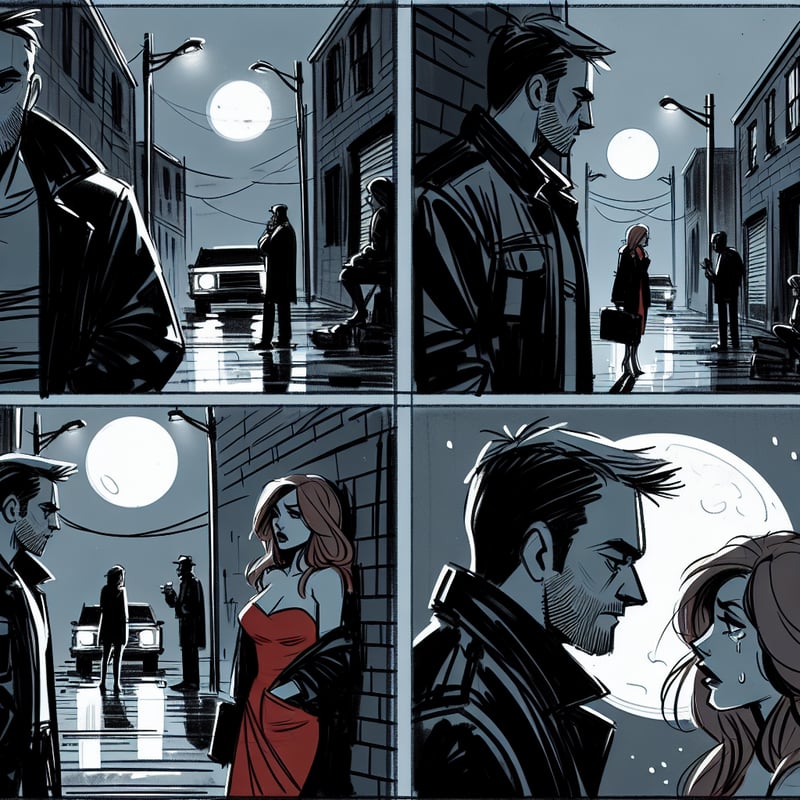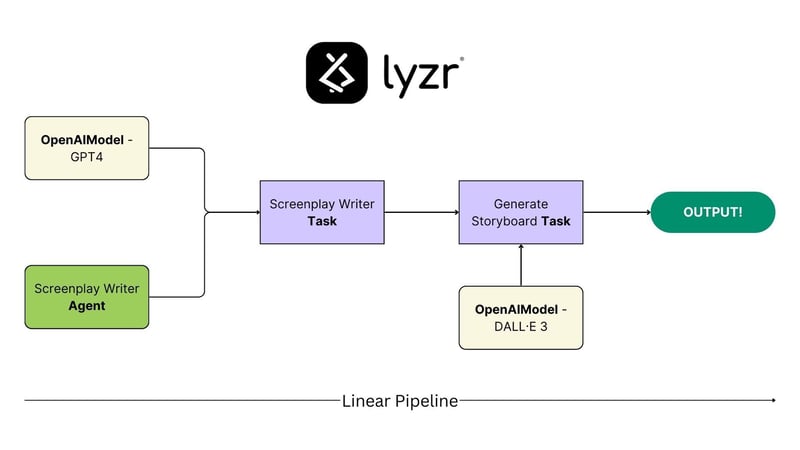Boost Your Filmmaking Workflow: Create Storyboards and Write Scenes using Lyzr-Automata

Rasswanth Shankar
Posted on March 27, 2024

Ever stare at your script or storyboard feeling like nothing clicks? We all hit our creative rut and some point. But what if you can make use of AI to break free? In this blog post, we’ll take a look how Lyzr-Automata can help us with it.
Setup
Create a folder, set up a virtual environment and activate it. Create .env file with your OPENAI_API_KEY. Then install the following libraries to get started.
Libraries
-
streamlit: for building the web app interface. -
lyzr_automata: for implementing our AI models, and tasks. -
dotenv: for loading environment variables (API key).
lyzr-automata==0.1.2
streamlit==1.32.2
python-dotenv==1.0.1
Getting Started
1.Import Libraries
from lyzr_automata.ai_models.openai import OpenAIModel
from lyzr_automata import Agent, Task
from lyzr_automata.tasks.task_literals import InputType, OutputType
from lyzr_automata.pipelines.linear_sync_pipeline import LinearSyncPipeline
from lyzr_automata import Logger
from dotenv import load_dotenv
import os
import streamlit as st
load_dotenv()
# LOAD OUR API KEY
OPENAI_API_KEY = os.getenv("OPENAI_API_KEY")
2. Setup interface using Streamlit
-
st.text_area— Text area to enter scene description (Link) -
st.button— Button to submit input (Link) -
st.write— Display text (Link) -
st.image— Display an image (Link)
input_scene = st.text_area("Enter Scene Description")
button=st.button('Submit')
if (button==True):
# CALL FUNCTION TO GENERATE OUTPUT
generated_output = storyboard_generator(input_scene)
# DISPLAY OUTPUT
text_output = generated_output[0]['task_output']
st.write(text_output)
image_file_name = generated_output[1]['task_output'].local_file_path
st.image(image_file_name, caption='Storyboard')
3. Create our AI Models
-
OpenAIModel— Create our models using OpenAI Key and specify the model type and name.
# DALLE 3 Image Model
open_ai_model_image = OpenAIModel(
api_key=OPENAI_API_KEY,
parameters={
"n": 1,
"model": "dall-e-3",
},
)
# GPT 4 Text Model
open_ai_model_text = OpenAIModel(
api_key= OPENAI_API_KEY,
parameters={
"model": "gpt-4-turbo-preview",
"temperature": 0.5,
"max_tokens": 1500,
},
)
4. Storyboard Generator Function
-
Agent— screenplay_writer_agent, create a Lyzr Agent for text creation and set persona. -
Task— screenplay_content_task, create Lyzr Task with scene description input, instructions and Text Agent. Define Input and Output types as well. -
Task— storyboard_creation_task, create another Lyzr Task with scene description input, instructions and Image Model. -
LinearSyncPipeline— Pass the Text Task first followed by the Image Task, enabling them to execute in sequence and ensure flow of data.
def storyboard_generator(input_content):
# Screenplay Writer Agent
screenplay_writer_agent = Agent(
prompt_persona="You are an intelligent Screenplay writer good at writing a short and detailed scene",
role="Screenplay writer",
)
# Write Screenplay Task
screenplay_content_task = Task(
name="Screenplay Content Creator",
agent=screenplay_writer_agent,
output_type=OutputType.TEXT,
input_type=InputType.TEXT,
model=open_ai_model_text,
instructions="Use the scene description provided and write 4 shots for a movie in 200 words. Use your creativity. [IMPORTANT!] Setup the location and characters in a detailed manner",
log_output=True,
enhance_prompt=False,
default_input=input_content
)
# Generate Storyboard
storyboard_creation_task = Task(
name="Storyboard Image Creation",
output_type=OutputType.IMAGE,
input_type=InputType.TEXT,
model=open_ai_model_image,
log_output=True,
instructions="Generate a set of 4 storyboard drawings for the given scene description. Capture every detail. Minimalistic style. [IMPORTANT!] Avoid any text or numbers in the image.",
)
logger = Logger()
# Linear Pipeline to run tasks
main_output = LinearSyncPipeline(
logger=logger,
name="Generate Storyboard",
completion_message="Storyboard Generated!",
tasks=[
screenplay_content_task,
storyboard_creation_task,
],
).run()
return main_output
5. Run App
streamlit run <app_name.py>
OUTPUT
My Input = “a man and woman argue in an alley while i watch it and walk past”
Flow Diagram
Want to create more of such amazing AI Workflows? Visit our website at GitHub to learn more about Lyzr-Automata!
Also checkout Lyzr SDKs at GitHub
Lyzr Website: Lyzr.ai
Lyzr Community Channel: Discord
Code: https://github.com/LyzrCore/lyzr-automata/tree/main/examples/storyboard_generator
Video Walkthrough: https://tella.video/storyboard-generator-8fpi

Posted on March 27, 2024
Join Our Newsletter. No Spam, Only the good stuff.
Sign up to receive the latest update from our blog.
Related

March 27, 2024

